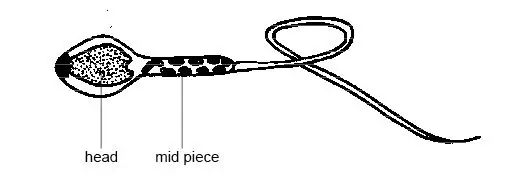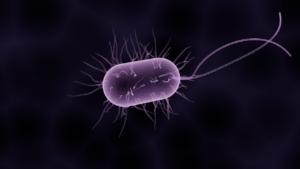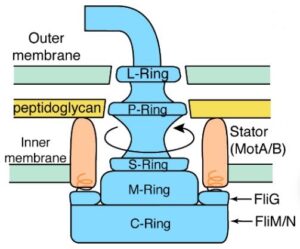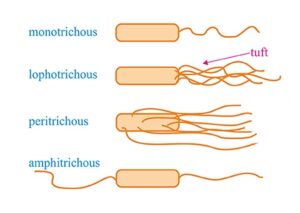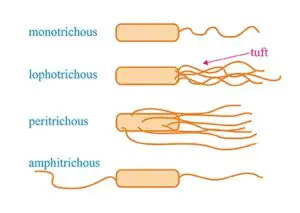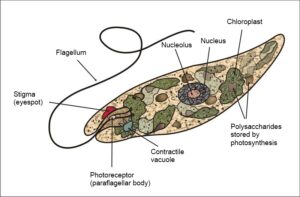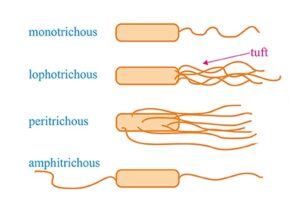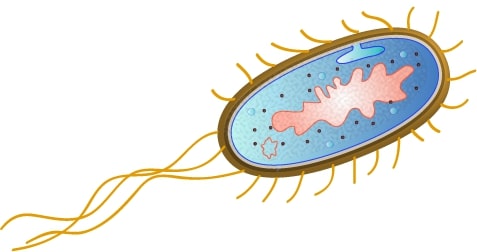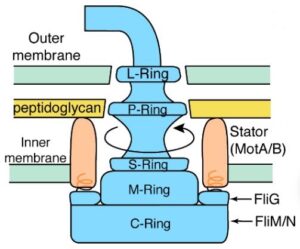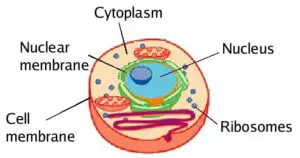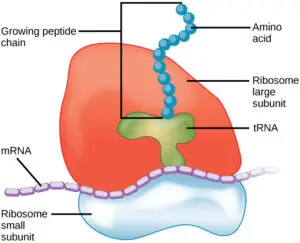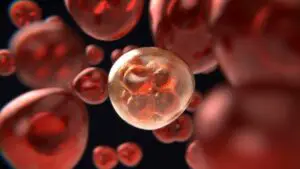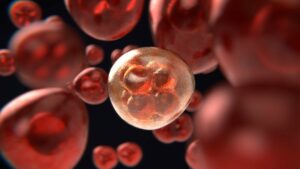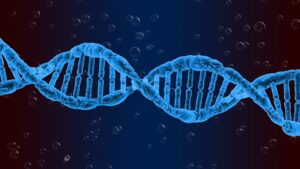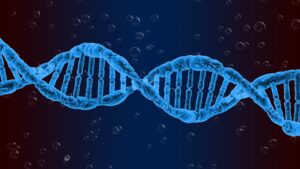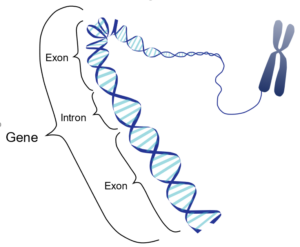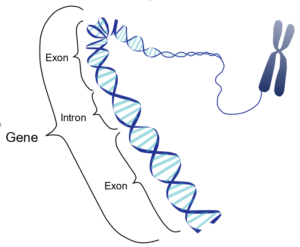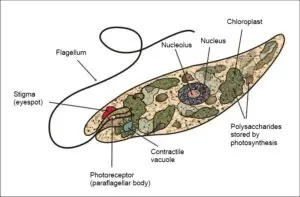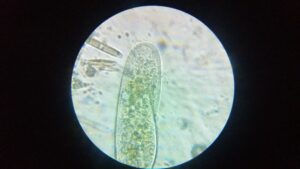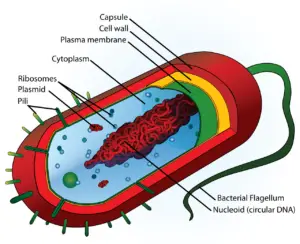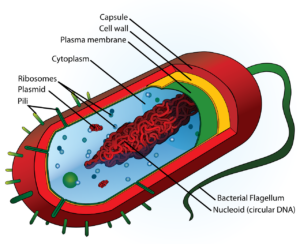Animal cells are fascinating structures that make up the tissues and organs of animals. They are the building blocks of life, carrying out various functions necessary for an organism’s survival. One intriguing feature found in some animal cells is the presence of flagella. Flagella are whip-like structures that enable cells to move and propel themselves through their environment. In this article, we will explore the question: do animal cells have flagella? We will delve into the different types of animal cells, their structures, and whether or not flagella are a common feature. So, let’s dive in and unravel the mysteries of animal cell biology!
Key Takeaways

- Animal cells can have flagella, which are whip-like structures that help with cell movement.
- Flagella are composed of microtubules and are found in certain types of animal cells, such as sperm cells.
- The presence of flagella in animal cells allows for various biological processes, including cell locomotion and the movement of fluids within the body.
Do Animal Cells Have Flagella and Cilia?
Presence of Flagella in Animal Cells

Flagella are whip-like appendages that are responsible for the movement of cells. While flagella are commonly found in bacteria and protists, their presence in animal cells is relatively rare. However, there are certain types of animal cells that do possess flagella.
One example of an animal cell that has flagella is the sperm cell. Sperm cells are specialized for locomotion, and their flagella enable them to swim towards the egg for fertilization. The flagellum in sperm cells is a long, slender structure composed of microtubules. This arrangement of microtubules allows for the whip-like movement that propels the sperm forward.
It is important to note that not all animal cells have flagella. In fact, the presence of flagella in animal cells is limited to specific cell types that require motility. Most animal cells rely on other mechanisms for movement and do not possess flagella.
Presence of Cilia in Animal Cells
Cilia, on the other hand, are short, hair-like structures that are found on the surface of many animal cells. Unlike flagella, which are typically singular and longer, cilia are usually present in large numbers and are shorter in length.
Cilia play a crucial role in various cellular processes. They are involved in the movement of fluid across the surface of cells, which is important for processes such as the clearance of mucus in the respiratory tract. Cilia also aid in the movement of eggs through the fallopian tubes and the movement of embryos during early development.
Similar to flagella, the structure of cilia is composed of microtubules. These microtubules are arranged in a specific pattern that allows for coordinated movement. The beating motion of cilia is facilitated by the sliding of microtubules against each other, powered by ATP.
In summary, while flagella are relatively rare in animal cells, they can be found in specialized cell types such as sperm cells. On the other hand, cilia are more common in animal cells and play important roles in various physiological processes. Both flagella and cilia are composed of microtubules and are involved in cellular movement, but they differ in terms of their structure and function.
Where Do Animal Cells Have Flagella?
Flagella, which are whip-like appendages responsible for cell movement, can be found in various organisms, including animal cells. While not all animal cells possess flagella, they are present in specialized cells such as sperm cells and certain unicellular organisms. Let’s explore the location and function of flagella in animal cells.
Flagella found in specialized cells like sperm cells and certain unicellular organisms
In animal cells, flagella are most commonly found in specialized cells, such as sperm cells. Sperm cells rely on flagella for motility, allowing them to swim towards the egg for fertilization. The flagellum in sperm cells is a long, slender structure that propels the cell forward through its whip-like movement. This enables the sperm to navigate through the female reproductive tract in search of the egg.
Flagella are also present in certain unicellular organisms, such as some protozoa. These organisms use flagella for locomotion, allowing them to move through their environment in search of food or to escape from predators. The presence of flagella in these organisms is crucial for their survival and reproductive success.
Location and adherence of flagella to the cell surface
In animal cells, the flagellum is anchored to the cell surface by a structure called the basal body. The basal body serves as an anchor point for the extension and movement of the flagellum. It is located at the base of the flagellum and is connected to the cell membrane.
The flagellum itself is composed of microtubules, which are long, hollow tubes made up of proteins. These microtubules are arranged in a specific pattern, known as the 9+2 arrangement, which is characteristic of flagella and cilia. The 9+2 arrangement consists of nine pairs of microtubules surrounding a central pair, providing the flagellum with structural support and allowing it to move in a coordinated manner.
Basal body as an anchor point for flagellum extension and movement
The basal body plays a crucial role in the extension and movement of the flagellum. It acts as a scaffold for the assembly of the microtubules that make up the flagellum. The microtubules grow outwards from the basal body, extending the length of the flagellum. This extension allows the flagellum to generate the whip-like motion necessary for cell movement.
The movement of the flagellum is facilitated by the sliding of the microtubules against each other. This sliding is made possible by the action of specialized motor proteins, which use ATP (adenosine triphosphate) as a source of energy. As the microtubules slide, the flagellum bends and propels the cell forward or moves fluid past the cell.
In conclusion, while not all animal cells possess flagella, they are found in specialized cells like sperm cells and certain unicellular organisms. The flagellum is anchored to the cell surface by the basal body, which serves as an anchor point for flagellum extension and movement. Understanding the presence and function of flagella in animal cells provides valuable insights into cell motility and the diverse mechanisms that organisms employ for movement.
Do All Animal Cells Have Flagella?
Flagella are whip-like structures that protrude from the surface of certain cells and are responsible for their movement. While flagella are commonly found in many organisms, including bacteria, protists, and some plant cells, not all animal cells possess flagella. The presence of flagella in animal cells depends on the specific cell type and its functional requirements.
Not all animal cells possess flagella
Unlike plant cells, which commonly have flagella, animal cells exhibit a greater diversity in terms of their structural and functional characteristics. While some animal cells do possess flagella, many others lack this appendage. Instead, animal cells have evolved various other mechanisms for movement and locomotion.
Flagella presence depends on the specific cell type and its functional requirements
The presence or absence of flagella in animal cells is determined by the specific cell type and its functional requirements. For example, sperm cells, which are responsible for fertilization, possess flagella that enable them to swim towards the egg. The flagellum in sperm cells is a long, whip-like structure that propels the sperm forward, allowing it to reach its destination.
On the other hand, certain animal cells, such as red blood cells and muscle cells, do not possess flagella. Red blood cells, also known as erythrocytes, are responsible for transporting oxygen throughout the body. They lack a nucleus and other organelles, including flagella, to maximize their capacity for oxygen transport. Muscle cells, which are involved in contraction and movement, rely on a different mechanism for their function and do not require flagella.
Examples of non-flagellated animal cells like red blood cells and muscle cells
-
Red blood cells: Red blood cells are specialized cells that lack a nucleus and organelles, including flagella. Their main function is to transport oxygen from the lungs to the body’s tissues and remove carbon dioxide. The absence of flagella allows red blood cells to adopt a biconcave shape, increasing their surface area and facilitating efficient gas exchange.
-
Muscle cells: Muscle cells, also known as myocytes, are responsible for contraction and movement in the body. They contain specialized proteins, such as actin and myosin, which interact to generate force and movement. Muscle cells rely on the coordinated contraction of these proteins rather than flagella for their function.
In conclusion, not all animal cells possess flagella. The presence or absence of flagella in animal cells depends on the specific cell type and its functional requirements. While some animal cells, like sperm cells, have flagella for movement, others, such as red blood cells and muscle cells, rely on different mechanisms for their respective functions. This diversity in cellular structures and functions contributes to the complexity and adaptability of animal organisms.
Why Do Animal Cells Have Flagella?
Flagella are whip-like appendages found on the surface of certain animal cells. They play a crucial role in various cellular processes, including locomotion and fluid movement. Let’s explore the functions of flagella in animal cells and their significance in different biological contexts.
Functions of Flagella in Animal Cells
Flagella are primarily responsible for the movement of animal cells. They act as propellers, allowing cells to swim through fluid environments. This motility is particularly important for cells that need to navigate through complex environments, such as sperm cells. Sperm cells rely on their flagella to propel themselves towards the egg for fertilization.
Apart from locomotion, flagella also facilitate fluid movement within animal cells. They create a flow of fluid over the cell surface, aiding in the exchange of nutrients and waste products. This fluid movement is crucial for maintaining cellular homeostasis and ensuring proper functioning of the cell.
Role of Flagella in the Respiratory System and Other Cellular Processes
In addition to their role in locomotion and fluid movement, flagella are involved in specific cellular processes. In the respiratory system, for example, cilia (a specialized type of flagella) line the airways and help to move mucus and trapped particles out of the lungs. This mechanism, known as mucociliary clearance, is essential for maintaining healthy respiratory function and preventing infections.
Flagella also play a role in sensory perception. In certain animal cells, such as those found in the olfactory system, flagella act as sensory antennae, detecting and responding to chemical signals in the environment. This allows animals to sense and respond to their surroundings, aiding in survival and reproduction.
Exceptions of Non-Flagellated Animal Cells and Alternative Mechanisms for Movement
While flagella are common in many animal cells, it is important to note that not all animal cells possess flagella. Some cells rely on alternative mechanisms for movement. For example, muscle cells contract and relax to generate movement, while amoeboid cells use a process called amoeboid motion, which involves the extension and retraction of cellular protrusions called pseudopods.
Additionally, some animal cells may have structures similar to flagella, called cilia, which are shorter and more numerous. Cilia have a similar structure to flagella but serve different functions. They are involved in various processes, such as sensory perception, fluid movement, and the coordination of cellular activities.
In conclusion, flagella are important organelles found in certain animal cells. They enable locomotion, facilitate fluid movement, and play a role in various cellular processes. While not all animal cells possess flagella, alternative mechanisms for movement exist. Understanding the functions of flagella in animal cells contributes to our knowledge of cell biology and helps us appreciate the complexity of life at the microscopic level.
Do Plant Cells Have Flagella?
Plant cells, unlike animal cells, do not possess flagella. Flagella are whip-like appendages that protrude from the surface of certain cells and are responsible for their movement. While flagella are commonly found in animal cells, they are absent in plant cells. This absence can be attributed to the structural characteristics of plant cells and the alternative mechanisms they employ for movement and dispersal.
Differences between Animal and Plant Cells in Terms of Flagella Presence
One of the key distinctions between animal and plant cells lies in the presence or absence of flagella. Animal cells, particularly sperm cells, rely on flagella for motility and movement. These long, slender structures are composed of microtubules and are capable of propelling the cell forward through their rhythmic beating motion. The presence of flagella in animal cells allows for efficient locomotion and enables sperm cells to reach their target.
On the other hand, plant cells lack flagella. This is due to the unique structural characteristics of plant cells. Plant cells have a rigid cell wall that surrounds the cell membrane, providing support and protection. This cell wall acts as a barrier, preventing the formation of flagella on the cell surface. Additionally, plant cells have a large central vacuole and chloroplasts, which are essential for photosynthesis and maintaining the cell’s shape. These organelles further restrict the presence of flagella in plant cells.
Absence of Flagella in Plant Cells Due to Their Structural Characteristics
The structural characteristics of plant cells play a crucial role in the absence of flagella. As mentioned earlier, the rigid cell wall surrounding plant cells prevents the formation of flagella on their surface. The cell wall is composed of cellulose, a complex carbohydrate that provides strength and rigidity to the cell. Unlike animal cells, which have a flexible plasma membrane, plant cells have a more rigid cell wall that restricts the movement of appendages like flagella.
Furthermore, plant cells have a unique organelle called the plasmodesmata. Plasmodesmata are channels that connect adjacent plant cells, allowing for the exchange of nutrients, water, and signals. These channels traverse the cell wall and are lined with plasma membrane, which also hinders the formation of flagella on the cell surface.
Alternative Mechanisms for Movement and Dispersal in Plant Cells
Although plant cells lack flagella, they have evolved alternative mechanisms for movement and dispersal. One such mechanism is the use of cilia. Cilia are similar to flagella in structure but are shorter and more numerous. They can be found on certain specialized cells in plants, such as the cells lining the reproductive structures of flowers. Cilia in plant cells aid in the movement of fluids and facilitate the dispersal of pollen.
Another mechanism employed by plant cells for movement and dispersal is through the use of specialized structures called trichomes. Trichomes are hair-like projections that can be found on the surface of leaves, stems, and other plant parts. They serve various functions, including reducing water loss, providing protection against herbivores, and aiding in the dispersal of seeds. Trichomes can be either glandular or non-glandular and play a crucial role in the survival and reproduction of plants.
In conclusion, while animal cells possess flagella for movement and locomotion, plant cells do not have flagella due to their structural characteristics. The rigid cell wall and the presence of other specialized organelles in plant cells prevent the formation of flagella. However, plant cells have evolved alternative mechanisms such as cilia and trichomes for movement and dispersal. These adaptations allow plant cells to thrive and fulfill their biological functions without the need for flagella.
Why Do Plant Cells Not Need Flagella?
Plant cells are fascinating structures that differ in many ways from animal cells. One notable difference is the absence of flagella in plant cells. Let’s explore the reasons behind this intriguing phenomenon.
Lack of movement in plant cells due to the rigid cell wall
One of the primary reasons why plant cells do not require flagella is the presence of a rigid cell wall. Unlike animal cells, which have a flexible plasma membrane, plant cells are surrounded by a sturdy cell wall composed of cellulose. This cell wall provides structural support and protection to the plant cell, but it also restricts movement.
The rigid nature of the cell wall prevents plant cells from changing their shape and moving freely. While animal cells can alter their shape and move through their environment, plant cells are firmly anchored in place. Therefore, the need for flagella, which are whip-like appendages responsible for cell movement, is eliminated in plant cells.
Alternative mechanisms for communication and coordination in plant cells
Although plant cells lack flagella for movement, they have evolved alternative mechanisms for communication and coordination. Plant cells communicate through plasmodesmata, which are channels that connect neighboring cells. These channels allow for the exchange of nutrients, hormones, and signaling molecules between plant cells.
Additionally, plant cells rely on specialized structures called plasmodesmata to coordinate their activities. Plasmodesmata are microscopic channels that traverse the cell walls, connecting the cytoplasm of adjacent plant cells. Through these channels, plant cells can share resources, such as water and nutrients, and coordinate their growth and development.
Role of other organelles in plant cells, such as chloroplasts and central vacuoles
Plant cells possess unique organelles that fulfill essential functions and compensate for the absence of flagella. Two such organelles are chloroplasts and central vacuoles.
Chloroplasts are responsible for photosynthesis, the process by which plants convert sunlight into energy-rich molecules. These organelles contain chlorophyll, a pigment that captures light energy and initiates the production of glucose. By harnessing the power of photosynthesis, plant cells can generate the energy they need for growth and survival.
Central vacuoles, on the other hand, play a crucial role in maintaining cell turgor pressure and storing various substances. These large, fluid-filled sacs occupy a significant portion of the plant cell‘s volume. By regulating the osmotic balance within the cell, central vacuoles help maintain cell shape and provide support to the surrounding tissues.
In conclusion, plant cells do not possess flagella due to the rigid cell wall that restricts movement. However, they have evolved alternative mechanisms for communication and coordination, such as plasmodesmata. Additionally, plant cells rely on specialized organelles like chloroplasts and central vacuoles to fulfill essential functions. These adaptations allow plant cells to thrive and perform their unique roles in the plant kingdom.
Explanation on Structure of an Animal Cell – The Sperm Cell
The sperm cell is a specialized animal cell that plays a crucial role in sexual reproduction. Let’s explore the structure of a sperm cell and understand how it functions.
Introduction to the Sperm Cell as a Specialized Animal Cell
The sperm cell, also known as a spermatozoon, is the male reproductive cell. It is responsible for fertilizing the female egg during sexual reproduction. Sperm cells are produced in the testes of male animals, including humans.
Three Parts of the Sperm Cell: Head, Mid-Piece, and Tail
The structure of a sperm cell consists of three main parts: the head, mid-piece, and tail. Each part has its own unique function.
-
Head: The head of a sperm cell contains the genetic material, including the DNA. It is covered by a cap-like structure called the acrosome, which contains enzymes that help the sperm penetrate the egg during fertilization.
-
Mid-Piece: The mid-piece of a sperm cell is located just behind the head. It is packed with mitochondria, which provide the energy needed for the sperm’s movement. The mid-piece also contains a centriole, which plays a role in cell division.
-
Tail: The tail, also known as the flagellum, is the longest part of the sperm cell. It is responsible for the sperm’s movement. The tail is made up of a whip-like structure called microtubules, which are arranged in a 9+2 pattern. This arrangement allows the flagellum to move in a wave-like motion, propelling the sperm forward.
Function of the Flagellum in Sperm Cell Movement
The flagellum, or tail, of the sperm cell is essential for its movement. It allows the sperm to swim through the female reproductive tract and reach the egg for fertilization. The flagellum’s whip-like motion propels the sperm forward, enabling it to navigate through the fluid environment.
The movement of the flagellum is made possible by the coordinated sliding of microtubules within the tail. Dynein, a motor protein, helps generate the force required for this movement. As the microtubules slide past each other, the flagellum bends and flexes, allowing the sperm to swim in a specific direction.
In conclusion, the sperm cell is a specialized animal cell with a unique structure that enables it to fulfill its reproductive function. The flagellum plays a crucial role in the movement of the sperm, allowing it to swim towards the egg for fertilization. Understanding the structure and function of the sperm cell provides valuable insights into the process of sexual reproduction in animals.
Conclusion
In conclusion, animal cells do not typically have flagella. While flagella are commonly found in many types of cells, such as bacteria and certain types of algae, they are not a characteristic feature of animal cells. Instead, animal cells rely on other structures and mechanisms for movement and locomotion. These include cilia, which are shorter and more numerous than flagella, and are found on the surface of many animal cells. Cilia play important roles in various cellular processes, such as the movement of fluids and particles across cell surfaces. Additionally, animal cells can also use pseudopodia, which are temporary extensions of the cell membrane, to move and engulf particles. Overall, while flagella are not present in animal cells, these cells have evolved other efficient mechanisms to carry out their functions and ensure their survival.
Do animal cells have flagella?
Yes, animal cells can have flagella, which are whip-like structures that enable cell movement. Flagella are found in various types of cells, including certain types of animal cells. To learn more about the different types and functions of flagella, check out our comprehensive guide on Types of flagella: an in-depth guide.
Frequently Asked Questions
1. Why do animal cells have flagella and cilia?
Animal cells have flagella and cilia to facilitate movement and locomotion. These structures enable the cells to propel themselves and navigate their environment.
2. Where do animal cells have flagella?
Flagella in animal cells are typically found on the surface of the cell. They extend outward from the cell membrane and can be found in various locations depending on the cell type.
3. Do all animal cells have flagella?
No, not all animal cells have flagella. The presence of flagella varies among different types of animal cells. Some cells may have flagella, while others may not.
4. Do animal cells contain flagellum?
Yes, animal cells can contain flagellum. The flagellum is a long, whip-like structure that protrudes from the cell and aids in cell motility.
5. Do plant cells have flagella?
No, plant cells do not have flagella. Instead, they have other structures, such as cilia or root hairs, that help with movement and other functions.
6. Do animal cells need flagella for movement?
Flagella are not the only means of movement for animal cells. While some animal cells rely on flagella for locomotion, others may use other mechanisms, such as cilia or pseudopodia, to move.
7. Why do cells have flagella?
Cells have flagella to enhance their motility and enable them to move towards or away from stimuli. Flagella play a crucial role in cellular processes such as reproduction and response to the environment.
8. Where do cells have flagella?
Flagella can be found in various types of cells, including animal cells, bacteria, and protists. In animal cells, flagella are typically located on the cell surface.
9. Do only animal cells have flagella?

No, flagella are not exclusive to animal cells. Bacteria and some protists also possess flagella, which serve similar functions of movement and locomotion.
10. Do cells need flagella?
Not all cells need flagella. While flagella are beneficial for certain cells that require motility, many other cells do not possess flagella and rely on alternative mechanisms for movement.
Also Read:
